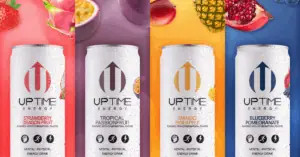Experiential marketing, sometimes referred to as “live marketing,” engages consumers using branded experiences with the goal to create a memorable and long lasting impact — one that will inspire them to share with their friends both online and off. Developing an experiential marketing strategy allows your brand to curate experiences that will not only will increase brand awareness, but also develop a stronger relationship with your customers.
At its core, experiential marketing is all about immersing consumers in live experiences. It’s one thing to have a positive experience using a product or service. However, tying that product or service to a specific positive memory opens up an entirely new relationship with your customers.
The goal of experiential marketing is to make an impression. But if you stop there, you’re only providing an experience. It is essential to incorporate your brand message within the experience and demonstrate the value your brand holds. In fact, about 65% of consumers say that live events and product demonstrations helped them fully understand a product better than any commercial or other method could.

When it comes to creating an experience that’s right for your brand, there are a few factors to consider to get the most out of your experiential marketing strategy.
Know Your Audience
Like most marketing initiatives, take time to understand your audience and the demographic you want to appeal to. Consider not only who your product is for, but also who is able to participate in your experience. While Budweiser will not be marketing to the same audience as Build-a-Bear, that does not necessarily mean their branded experiences need to be exclusive. If your product is intended for adults, you shouldn’t ignore children when planning your experience. Perhaps a child’s interest could spark the same in his parent. Take a step back and think about why your fans love your brand and utilize those reasons to curate an experience that everyone can enjoy.
Engage Social Media
While the method is to provide an immersive in-person experience that your fans will love, it is also important to share this joy with your fans across the globe. In the age of social media, you want to create a splash, something that will have people talking about your brand even if they can’t attend in person. Try incorporating a social media aspect into your experience, where fans can redeem rewards or prizes by mentioning your brand and posting photos. Not only will this create a shockwave of buzz and attention to your brand, but it will also provide you with a stable of user generated content to use in the future.
Utilize An Active Component
The ways in which consumers respond to advertising is constantly evolving, and so is the way they want to spend their time and money. In fact, 72% of millennials stated that they prefer experiences over material items. Yes, your brand could sit on a street corner handing out free samples and products, but adding an active component to your experiential marketing strategy is sure to take it over the top. Curating an experience that no only promotes your brand but also provides a fun activity for fans to participate in will help develop the strong relationship that all brands look for.
Let’s look at Gatorade as a case study for successful experiential marketing strategies. As a sports/energy drink company, Gatorade is well aware that their main demographic is typically athletes and those who enjoy being active. Thus, they created the Gatorade experience, a collection of object tracking displays, multi-touch experiences, large scale installations, and mini games where fans can test their athletic performance. They curated an immersive experience that engages their ideal audience (athletes), while promoting social media engagement and showcasing the ways their products benefit athletes. And most of all, provided a fun and memorable experience.



